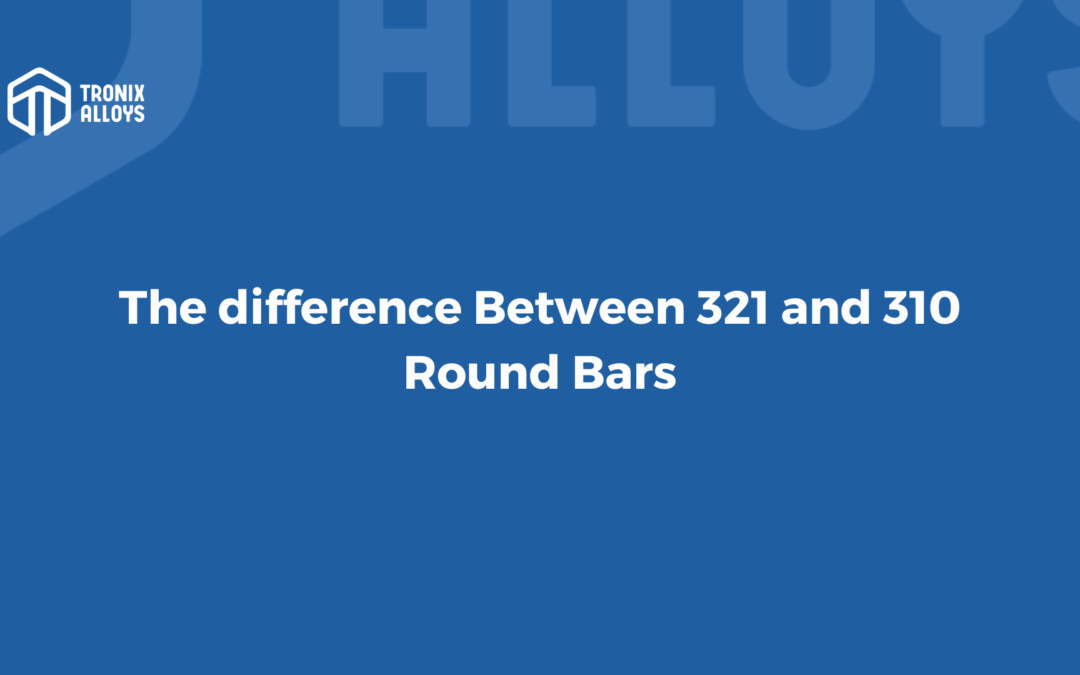
What are 310 round bars?
It is designed for high temperature applications that require stainless steel 310 round bars. As the alloy resists oxidation in continuous application processes, temperatures can rise as high as 1150 °C. 310 stainless round bars offer a good level of oxidation resistance as long as reducing sulfur gases are not present in the application environment when using them. It should be noted that the astm a276 type 310 tube is not only suited for continuous application, but it can also be used in intermittent applications, where temperatures can elevate up to 1040 °C over the duration of the service interval.
The round bar made of stainless steel 310 is generally used in environments where the alloys are to be exposed to moist corrosion causing environments. These moist corrosion causing environments usually occur at temperatures that are lower than those typically considered high temperature. In general, austenitic stainless steel grades like AISI 310 round bar tend to be exceptionally tough even down to cryogenic temperatures because of their excellent toughness. Other grades of stainless steel are normally used in applications that involve cryogenic environments, though other grades of stainless steel are not uncommon.
The high chromium content added in the 310 round bar has not only been intended to increase high temperature properties but also gives these grades a good corrosion resistance in aqueous media due to the high chromium content. In the standard ASTM A276 gr 310 stainless steel round bar, the PRE resistance number is approximately 25, and it is the seawater resistance number that is approximately 22 degrees Celsius, similar to the 316 stainless steel grade.
There is a possibility that the grade 310 stainless steel flat bar might crack due to stress corrosion, but it is known to be more resistant than grades 304 and 316 stainless steel flat bars.
What are 321 round bars?
The JIS SUS 321 stainless steel bar is a high-quality austenitic stainless steel alloy that belongs to the 300 series of stainless steel alloys. Its mechanical and corrosion resistance properties are among the best among the 300 series stainless steel alloys. There are many similarities between a stainless steel round bar made from alloy 321 and a stainless steel round bar made from grade 304 stainless steel, but with the addition of titanium, the alloy is stabilized with a higher degree of corrosion resistance.. Whenever it comes to welding operations, the incorporation of titanium into any alloy can be beneficial, particularly when the alloy will be subjected to welding operations.
It is believed that titanium carbides form on a weld seam when welding, which are relatively stable compared to carbide precipitation in other cases. In addition to being highly resistant to intergranular corrosion, alloy 321 stainless steel rods also do not undergo sensitization in their grain boundaries due to their superior resistance to intergranular corrosion. As well as improving the mechanical properties of the ASTM A276 type 321 flat bar when exposed to extremely high temperatures, the inclusion of titanium also increases its strength. Grade 304 and the ASTM A479 UNS S32100 hex bar have a lot in common: they both have excellent yield strength and impact resistance. Another common ground is that they deliver excellent performance even in cryogenic environments, which is another common ground between grade 304 and ASTM A479 UNS S32100 hex bar.
When used in cryogenic applications, alloys must have high impact strength and mechanical properties. The DIN 1.4541 square bar is a perfect example of the alloying of metals such as chromium, nickel, manganese, and titanium, which are reduced to ensure better mechanical properties. The main reason buyers choose AISI 321 threaded bar is that it has better creep strength at high temperatures. The alloy grade SS 321 bright bar can withstand these high temperatures when other alloys like 304 are susceptible to failure.
321 Stainless Steel Round Bar Specification Format
- In accordance with ASTM A276/ASME SA276, SA479/A479 specifications
- Among the standards that are available are DIN, EN, ASTM, JIS, ASME, BS, and AISI
- The diameter of the round bar ranges from 4mm to 500mm
- Bars with bright surfaces ranging from 4 mm to 100 mm in OD
- Bars with hexagonal ends measuring 18-57mm (11/16-inch to 2-3/4-inch) in diameter
- Bars with a square cross section range from 18mm to 47mm (11/16″ to 1-3/4″).
- This product has 5 different finishes available – Matt Finish, Bright Polished, Black, NO.4 Finish, Rough Turned, BA Finish.
- It varies in size from 1 meter to 6 meters, and it comes cut to size
- There are many types of forms, such as hex, square, round, rectangle, etc.
310 STAINLESS STEEL ROD SPECIFICATION
- Specifications ASTM A276, A479 / ASME SA276, SA479 in accordance with ASTM
- Sizes EN, DIN, JIS, ASTM, BS, ASME, AISI
- There are 18mm – 57mm hex bars available in milimeters (11/16″ to 2-3/4″).
- In the range of 4mm to 500mm, round bars have an outside diameter of 4mm
- There are four different sizes of bright bars with an outer diameter of 4mm to 100mm
- Stainless steel square bars between 18mm and 47mm (11/16″ to 1-3/4″).
- The following finishes are available: Black, Bright Polished, Rough Turned, NO.4 Finish, Matt Finish, BA Finish
- Custom cut lengths are available from 0.5 meters to 6 meters
- There are flat bars available in the dimensions of 1/2″ to 10″ with thicknesses ranging from 2mm to 150mm.
- Ingot, billet, square, hex (A/F), rectangle, billet, coil, and forgings, etc.

